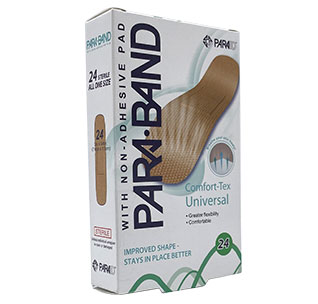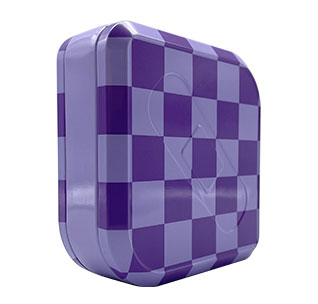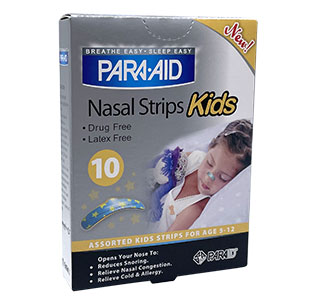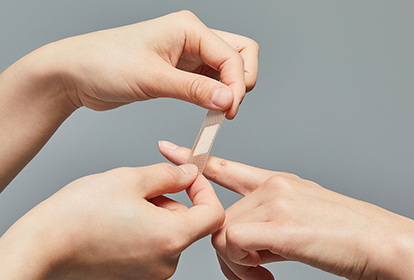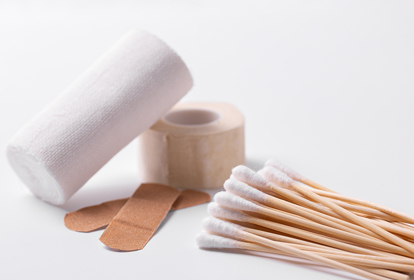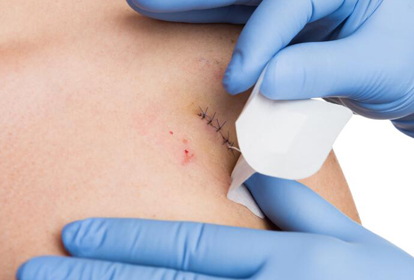Anatomy of an Adhesive Bandage
Adhesive bandages, commonly known as Band-Aids or plasters, are a staple in first aid kits worldwide. Understanding their composition is key to appreciating their functionality in wound care. This section delves into the various components that make up an adhesive bandage.
1. Components of an Adhesive Bandage
Adhesive Sheet: The foundation of the bandage, typically made of materials like fabric, plastic, PVC, polyethylene, or polyurethane. The choice of material impacts the bandage's flexibility, breathability, and waterproof characteristics.
Absorbent Pad: Positioned in the center of the bandage, this pad is often made of cotton or a hydrogel material. It serves to absorb blood and exudates from the wound, providing a cushioning effect, especially in hydrogel variants.
Protective Backing: A removable layer that keeps the adhesive side sterile and free from contaminants until application. It's usually made of a coated paper or plastic.
2. Adhesive Types
The effectiveness of an adhesive bandage largely depends on the quality of its adhesive. Most adhesives are acrylates, including methacrylates and epoxy diacrylates (vinyl resins), ensuring strong, skin-friendly adhesion. Some modern bandages use cyanoacrylate, the same compound found in medical-grade glues like superglue.
3. Design Variations
Adhesive bandages come in various shapes and sizes, designed to accommodate different types of wounds and body parts.
Standard Rectangular Bandages: Ideal for minor cuts and abrasions, available in different sizes.
Butterfly Closures: Used for closing small lacerations, resembling a butterfly's wings in shape.
Hydrogel Dressings: Transparent bandages with a hydrogel pad, providing extra cushioning and cooling effect for burns or blisters.
Occlusive Dressings: Airtight and waterproof, these bandages provide a higher level of protection against water and contaminants.
Types and Special Features of Adhesive Bandages
Adhesive bandages, also known as Band-Aids, plasters, or medical dressings, are versatile in design, each tailored to meet specific needs. This section explores the various types of adhesive bandages and their unique features.
Types of Adhesive Bandages
Standard Adhesive Bandages: These are the most common type, used for minor cuts and scrapes. They typically consist of a small, absorbent pad centered on an adhesive strip. For larger wounds, consider using Big Adhesive Bandages.
Butterfly Closures: Also known as butterfly stitches, these are thin adhesive strips used to close small wounds. They are applied across lacerations to pull the skin together, aiding in the healing process.
Hydrogel Dressings: Transparent bandages featuring a hydrogel pad, ideal for blisters and burns. The hydrogel provides a cooling and cushioning effect.
Occlusive Dressings: Waterproof and airtight, these bandages are designed for more serious wounds, providing a high level of protection against water and contaminants.
Fabric Bandages: Made with a flexible fabric, these bandages conform to the body and are suitable for joints or areas that move frequently.
Plastic Bandages: These are made from plastic materials like PVC, polyethylene, or polyurethane, offering a waterproof option for wound care. Check out Plastic Adhesive Bandages for durable choices.
Transdermal Patches: These are specialized adhesive bandages designed to deliver medication through the skin, rather than for wound care.
2. Special Features
Antibacterial Properties: Some adhesive bandages are impregnated with antiseptic agents to reduce the risk of infection. For antibacterial options, see Anti-Bacterial Adhesive Bandages.
Waterproof Options: Ideal for protection during activities involving water, these bandages maintain their adhesive quality even when wet.
Different Skin Tones: Recognizing diversity, some brands now offer bandages in a variety of skin tones for a more discreet appearance.
Children's Bandages: Featuring bright colors and cartoon characters, these are designed to appeal to children and make the healing process more enjoyable. Explore Colorful Adhesive Bandages for fun options.
Food Safety Bandages: Used in food preparation environments, these are often blue for high visibility and may include a metal strip for detectability in case of accidental inclusion in food.
Allergy-Friendly Options: Hypoallergenic variants are available for those with sensitive skin or allergies, particularly to latex.
3. Innovation in Design
The world of adhesive bandages is continually evolving, with new materials and technologies enhancing their functionality. Innovations like thinner, more breathable materials, and advanced adhesives that minimize skin irritation, are making modern adhesive bandages more effective and comfortable than ever before. For cost-effective yet reliable options, consider Economic Adhesive Bandages.
What is the Difference Between Adhesive and Non-Adhesive Bandages?
Understanding the distinction between adhesive bandages (like Band-Aids) and non-adhesive bandages is crucial in selecting the appropriate dressing for different types of wounds. This section explores the key differences and applications of each type.
Adhesive Bandages
Adhesive bandages are designed for convenience and ease of use. They are typically used for minor cuts, scrapes, and blisters. Key characteristics include:
Self-Adhesive: These bandages have an adhesive layer that sticks directly to the skin, surrounding the wound.
Structure: Comprises an adhesive strip with a central absorbent pad. The strip is usually made of fabric, plastic, or latex.
Variety: Available in various sizes, shapes, and for different skin types. Some have special features like waterproof material or antibacterial coatings.
Ease of Application: Designed for quick, one-step application, ideal for small wounds and everyday use.
Non-Adhesive Bandages
Non-adhesive bandages, also known as gauze, wraps, or tubular bandages, are used for larger wounds or when adhesion to the skin is not desirable. They require secondary fixation, such as medical tape or a bandage clip. Key aspects include:
No Adhesive: These bandages do not have an adhesive layer and need to be secured with tape or other methods.
Flexibility: Often more flexible and breathable than adhesive bandages, allowing for better movement and air circulation.
Larger Wounds: Ideal for covering larger wounds or areas that require regular dressing changes.
Application: Application is more involved, requiring proper placement and securing of the bandage.
Key Differences
| Aspect | Adhesive Bandages | Non-Adhesive Bandages |
|---|
| Adhesion | Self-adhesive | Requires external fixation |
| Ease of Use | Easy, one-step application | More complex application |
| Wound Size | Suitable for small wounds | Ideal for larger wounds |
| Breathability | Varies based on material | Generally more breathable |
| Flexibility | Limited by adhesive | Highly flexible |
| Special Features | Waterproof, antibacterial, etc. | Can be combined with treatments |
Choosing the Right Bandage
Consider the Wound Size and Location: Small, superficial wounds are well-suited for adhesive bandages, while larger wounds may require non-adhesive options. To ensure proper application, especially in tricky areas like joints, learn how to put a bandage on a knuckle.
Skin Sensitivity: For sensitive skin, non-adhesive bandages or hypoallergenic adhesive bandages are preferable. You can explore options from custom band aid manufacturers for bandages that cater to specific skin types.
Activity Level: Waterproof and durable adhesive bandages are ideal for active individuals or situations involving water. Consider our bulk plastic adhesive bandage strips for a variety of needs, and use our clear adhesive tape for skin for securing bandages firmly. Additionally, for larger requirements, browse our bulk adhesive bandages. Don't forget to check the band aid size chart to find the perfect size for your needs.
 English
English
